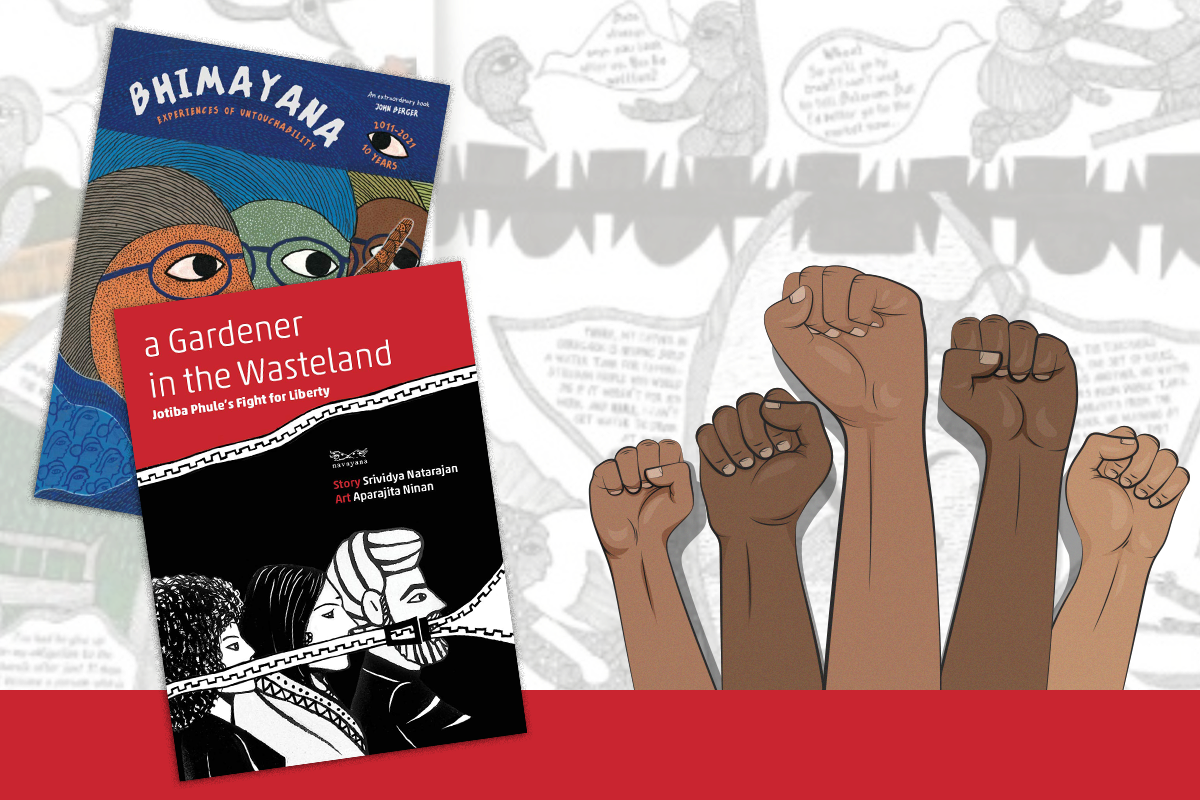
From the position of exclusion, anti-caste revolutionaries Jotirao Phule and BR Ambedkar challenged systematic discrimination in India by raising their voice. These graphic novels present their accounts and activism in a new light. By Paridhi Badgotri
In 2003, when Dalit literature only consisted of autobiographies, Navayana started to publish anti-caste literature in a variety of forms. Their graphic novels have reached a wide audience and shed much-needed light on the atrocities of the caste system by reinventing scathing texts of Indian revolutionaries. The two that caught my eye are A Gardener in the Wasteland and Bhimayana.

A Gardener in the Wasteland marries Aparajita Ninan’s visual aesthetics with a story written by Srividya Natarajan, and narrates their journey of reading Jyotirao Phule’s Gulamgiri. The graphic novel based on Jyotiba’s witty and insightful attack on Brahminical hegemony is increasingly relevant and a great argument for reading the original revolutionaries.

The book not only present Phule’s incessant fight for the rights of Shudras and Atishudras, but also weaves in the contribution of his partner Savitribai Phule in highlighting caste and gender oppression. In the afterword, Natarajan posits, “The writings of Jyotirao Phule filled me with admiration, but if truth be told, it was Savitribai who lured me in: Phule’s child-bride, enigmatic in the scanty accounts of their life, carrying her defiance like a quiet but steady flame”. With the condemnation of Manusmitri, Vedas, and Aryan theory, the book highlights how history and society is moulded by the ones in power for their self-interests.

While Ninan’s black-and-white illustrations prop up the eye-opening history of India in A Gardener in the Wasteland, the free-flowing and colourful art in Bhimayana breaks conventions. Durgabai and Subhash Vyam’s graphics do not conform with the panels usually seen in graphic novels but break the boundaries—a symbol of the anti-caste movement. The illustrations are inspired from the Digna art of the Gond community, the largest tribal group of India. Based on the life of Ambedkar, Natarajan—with S Anand this time—documents the brutal injustice in the denial of three life necessities to lower-caste people: water, shelter, and travel.

Drawing from a critique of Manusmriti, unjustified legislatives, and instances of caste-based killings and harassment, the novel reveals the plight of the ‘untouchables’ and how their exclusion led to the creation of a country that still witnesses such oppressions.

These graphic novels don’t just show a denial of rights, like water and education, to lower-caste people but also offer inspiring stories of dissent. They highlight the injustice that continues to loom in Indian society. Both of them are available across Kunzum bookstores.
Related: An Ode to Albert Camus: From the Absurdism of Life to a Moral Responsibility towards Humanity

1 thought on “Two Graphic Novels that Tell the Inspiring Stories of Anti-Caste Activists & their Groundbreaking Work”